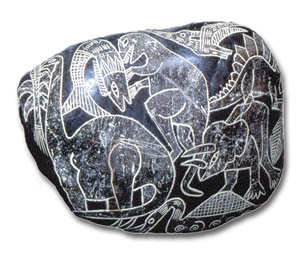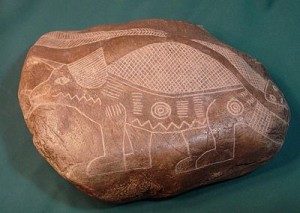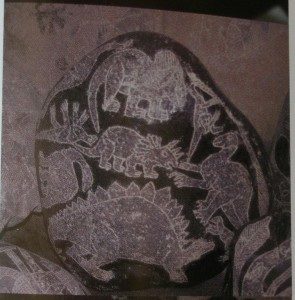 Lumbering giants, terrifying predators, beasts that challenge the imagination; dinosaurs are and have been one of the great wonders of the world. People have been finding dinosaur fossils for hundreds, if not thousands of years, and they, no doubt, have been the catalyst for many an ancient beast legend.
Lumbering giants, terrifying predators, beasts that challenge the imagination; dinosaurs are and have been one of the great wonders of the world. People have been finding dinosaur fossils for hundreds, if not thousands of years, and they, no doubt, have been the catalyst for many an ancient beast legend.
The first scientifically described dinosaur fossil was a Megalosaurus, found in 1824 by British fossil hunter William Buckland. Since that time, millions of such fossils have been found, and thus began the long standing guessing game of palaeontology. Many nearly complete fossils have been found, which give us a decent idea of the general appearance of many dinosaurs, but our knowledge of the details of what they looked like is limited by the nature of fossils. But it seems that some in our ancient history had the jump on us when it comes to what dinosaurs looked like.
In 1966, Peruvian physician Javier Cabrera Darquea was presented with a stone that had a carved picture of what Cabrera believed to be an extinct fish by a friend for his 42nd birthday. Cabrera’s father had begun a collection of similar stones in the 1930s, and based on his interest in Peruvian prehistory, Cabrera began collecting more. The more he collected, however, the stranger the story got. These are, in fact, the Ica Stones, so named because they are found in Ica, Peru. The stones are made of andesite and vary in size from pebbles to boulders. They have carved in them various scenes which include dinosaurs and other animals, advanced medical works and maps.
 Cabrera believes the stones date to somewhere between 500BC and 1000ad, but since stone cannot be carbon dated their actual age is up in the air. However, if the stones are as old as Cabrera says, there’s a problem, and a glaring problem at that. How exactly could the people of Ica Peru have carved such accurate images of dinosaurs more than 2000 years ago?
Cabrera believes the stones date to somewhere between 500BC and 1000ad, but since stone cannot be carbon dated their actual age is up in the air. However, if the stones are as old as Cabrera says, there’s a problem, and a glaring problem at that. How exactly could the people of Ica Peru have carved such accurate images of dinosaurs more than 2000 years ago?
Dinosaurs lived through three different ages according to palaeontologists, the Cambrian (542–488.3 million years ago), the Triassic (250 to 200 million years ago) and the Jurassic (200 million to 145 million years ago) periods. This means, according to mainstream science, that dinosaurs have been extinct for at least 145 million years. So how exactly did ancient Peruvians know what they looked like?
 The Ancient Alien Theory suggests that knowledge of dinosaurs and even the medical processes that have been carved on these stones was given to the Ica people by their sky gods, or more accurately, ancient aliens. Other conspiracy theorists insist that dinosaurs lived a lot longer than mainstream science wants to admit. They suggest that the Ica people carved what they saw first hand, meaning that dinosaurs lived during the reign of the Ica people just more than 2000 years ago. Some even go so far as to claim that some dinosaurs still exist to this day, pointing to the Loch Ness Monster and Ogopogo in Western Canada as evidence for their claim.
The Ancient Alien Theory suggests that knowledge of dinosaurs and even the medical processes that have been carved on these stones was given to the Ica people by their sky gods, or more accurately, ancient aliens. Other conspiracy theorists insist that dinosaurs lived a lot longer than mainstream science wants to admit. They suggest that the Ica people carved what they saw first hand, meaning that dinosaurs lived during the reign of the Ica people just more than 2000 years ago. Some even go so far as to claim that some dinosaurs still exist to this day, pointing to the Loch Ness Monster and Ogopogo in Western Canada as evidence for their claim.
Mainstream science, however, has a different theory, as one would expect. Geologists contend that the andesite stones have been carved much more recently than others would have you believe. Some say that the carvings are less than fifty years old, and that they are simply an artistic expression of the modern people of Ica Peru.
Of course, there are those who would seek to use the existence of these stones as evidence that man and dinosaur coexisted at some point in our past. Creationists have latched onto this legend (if you will) and are pointing and shouting that these stones are the proof they’ve been looking for to say that the Earth is less than 6000 years old.
The stones, which number in the hundreds of thousands, could, in all likelihood, be a modern hoax, intentionally pushed into the fore by a people whose culture is going the way of the dodo. But there is a chance, however small, that they are a genuine mystery out of the ancient past. Whichever way you lean, there’s something to be said for the artistic value of the carvings themselves.
